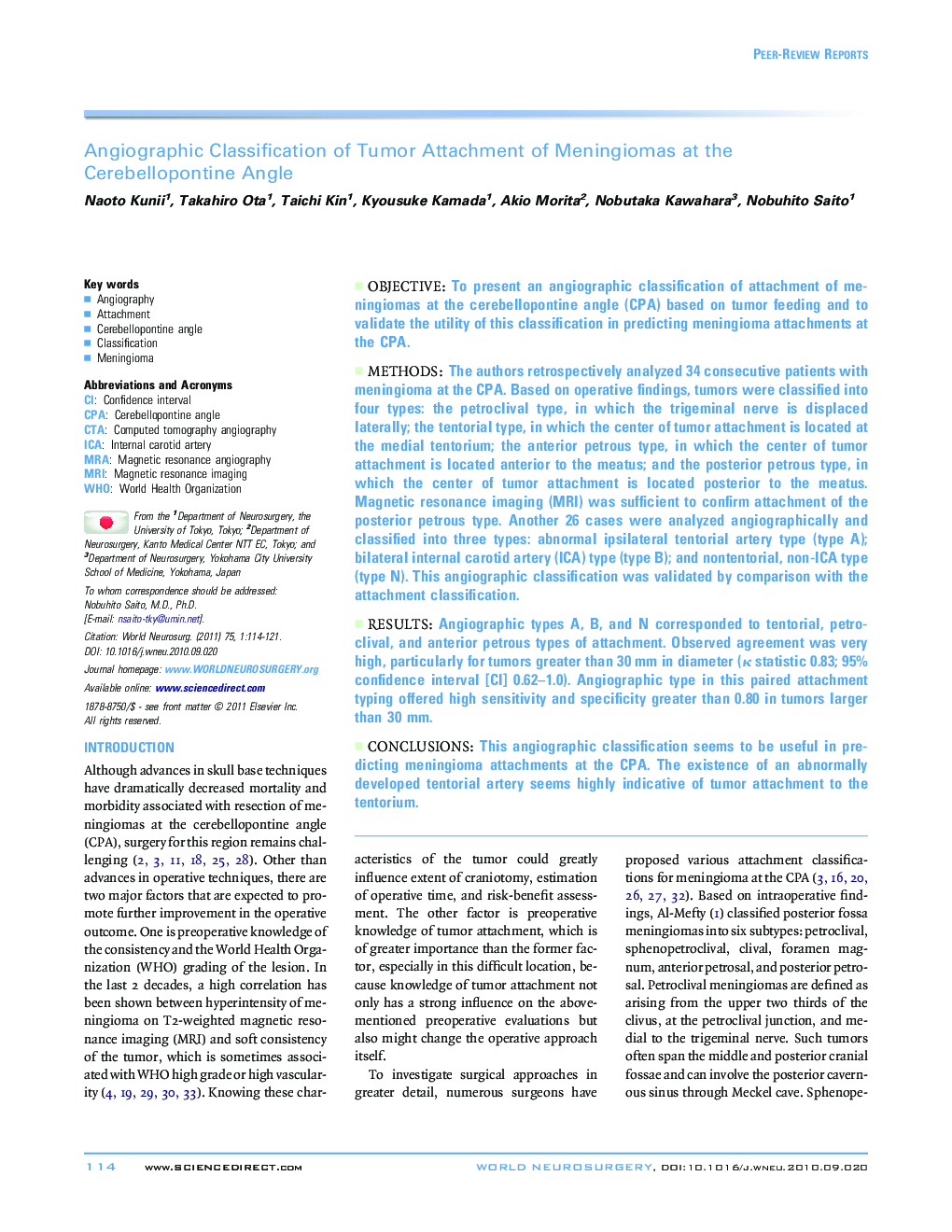| Article ID | Journal | Published Year | Pages | File Type |
|---|---|---|---|---|
| 3096003 | World Neurosurgery | 2011 | 8 Pages |
ObjectiveTo present an angiographic classification of attachment of meningiomas at the cerebellopontine angle (CPA) based on tumor feeding and to validate the utility of this classification in predicting meningioma attachments at the CPA.MethodsThe authors retrospectively analyzed 34 consecutive patients with meningioma at the CPA. Based on operative findings, tumors were classified into four types: the petroclival type, in which the trigeminal nerve is displaced laterally; the tentorial type, in which the center of tumor attachment is located at the medial tentorium; the anterior petrous type, in which the center of tumor attachment is located anterior to the meatus; and the posterior petrous type, in which the center of tumor attachment is located posterior to the meatus. Magnetic resonance imaging (MRI) was sufficient to confirm attachment of the posterior petrous type. Another 26 cases were analyzed angiographically and classified into three types: abnormal ipsilateral tentorial artery type (type A); bilateral internal carotid artery (ICA) type (type B); and nontentorial, non-ICA type (type N). This angiographic classification was validated by comparison with the attachment classification.ResultsAngiographic types A, B, and N corresponded to tentorial, petroclival, and anterior petrous types of attachment. Observed agreement was very high, particularly for tumors greater than 30 mm in diameter (κ statistic 0.83; 95% confidence interval [CI] 0.62–1.0). Angiographic type in this paired attachment typing offered high sensitivity and specificity greater than 0.80 in tumors larger than 30 mm.ConclusionsThis angiographic classification seems to be useful in predicting meningioma attachments at the CPA. The existence of an abnormally developed tentorial artery seems highly indicative of tumor attachment to the tentorium.
